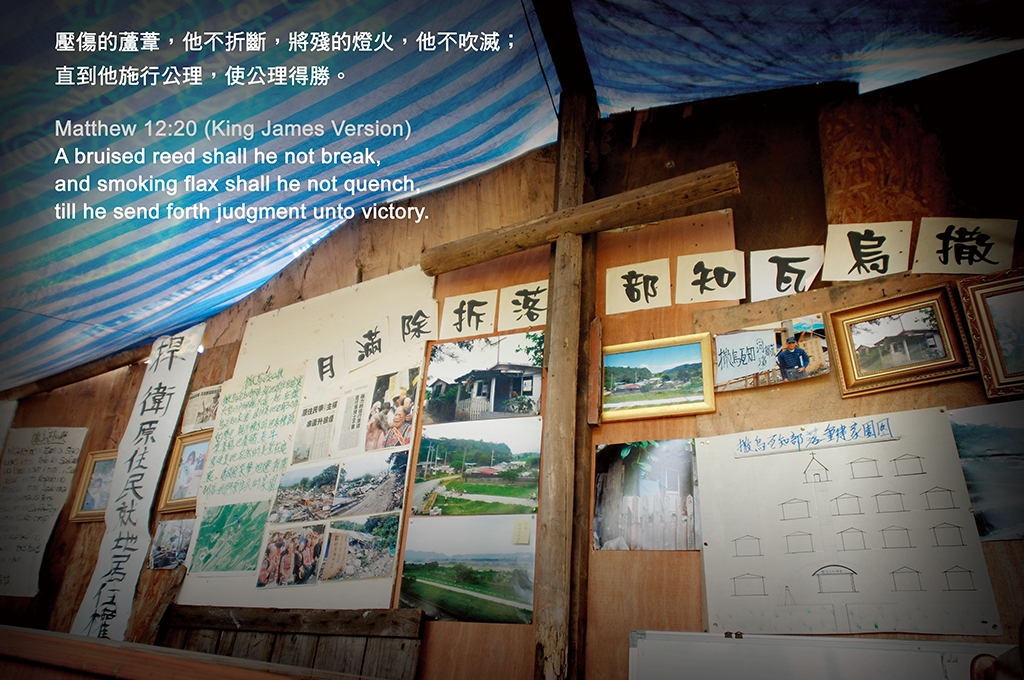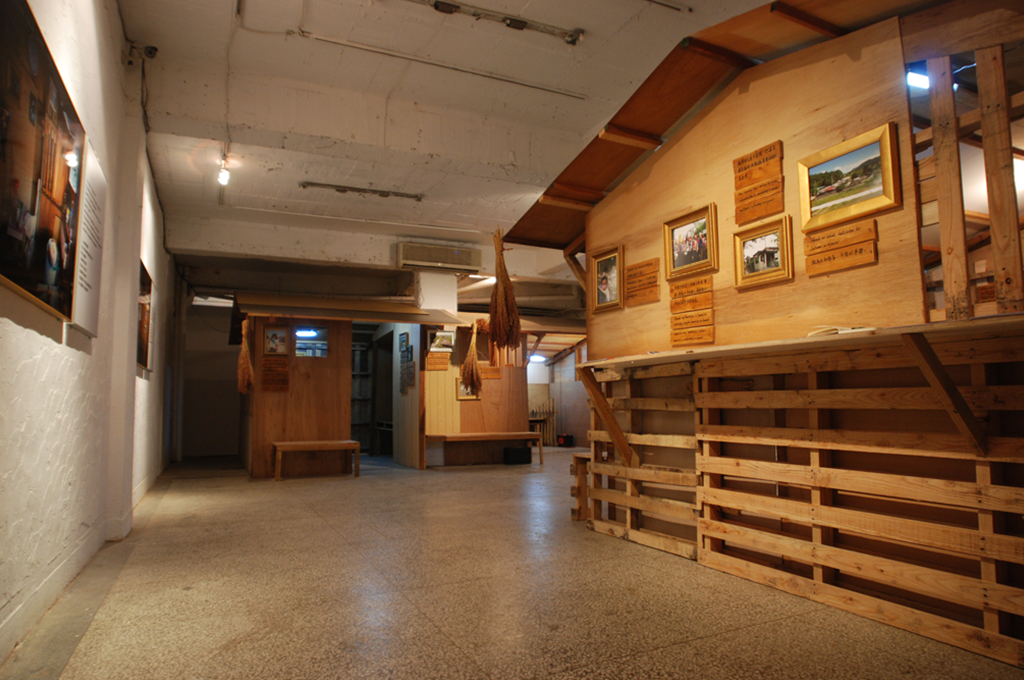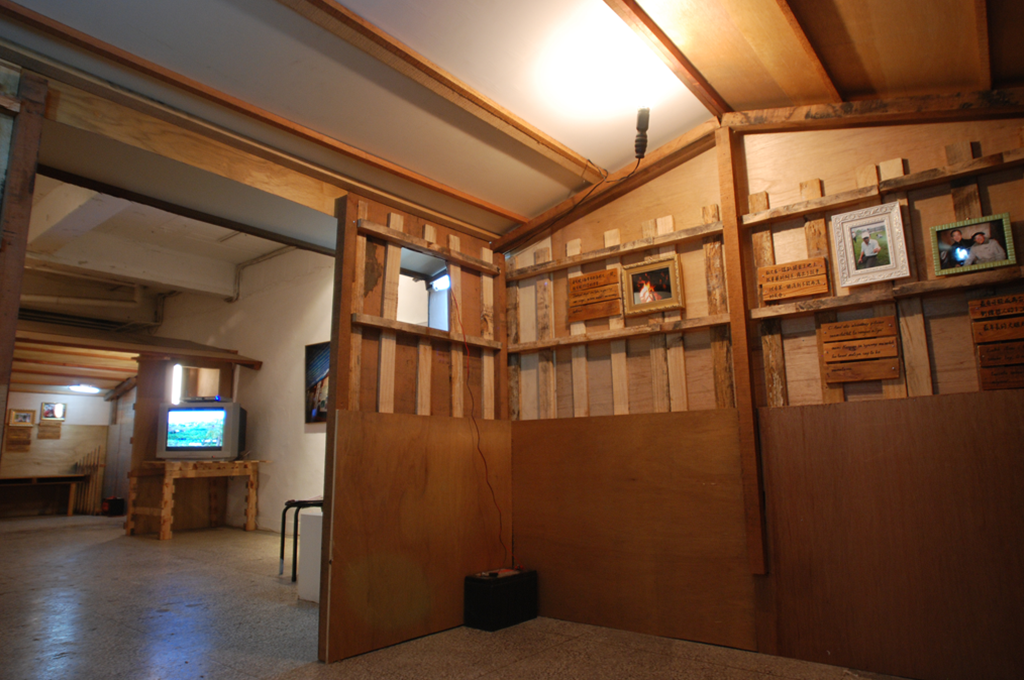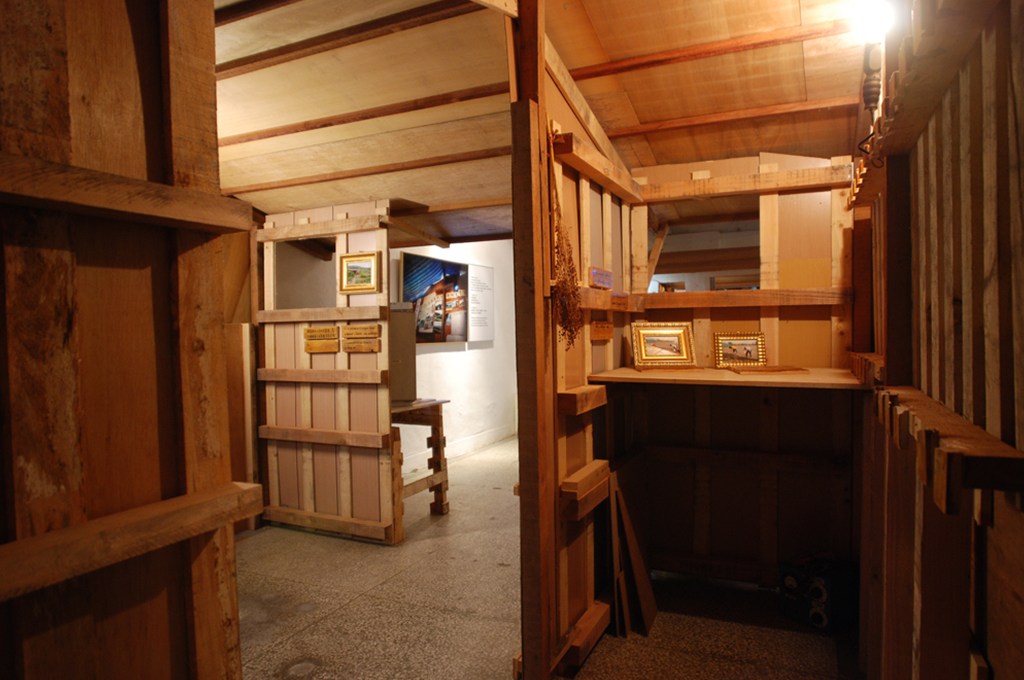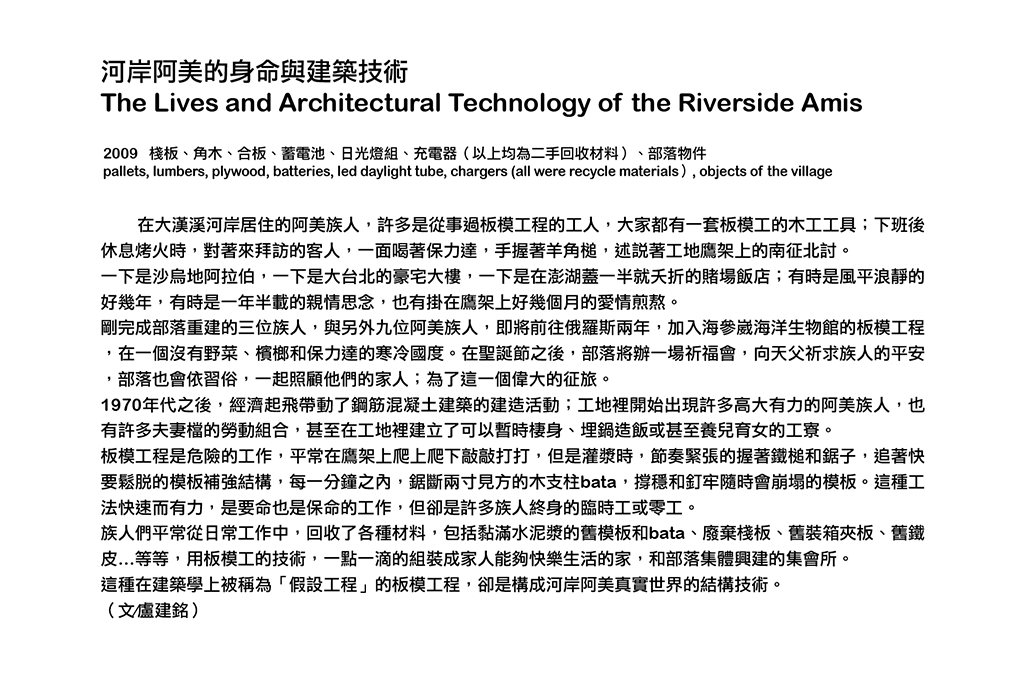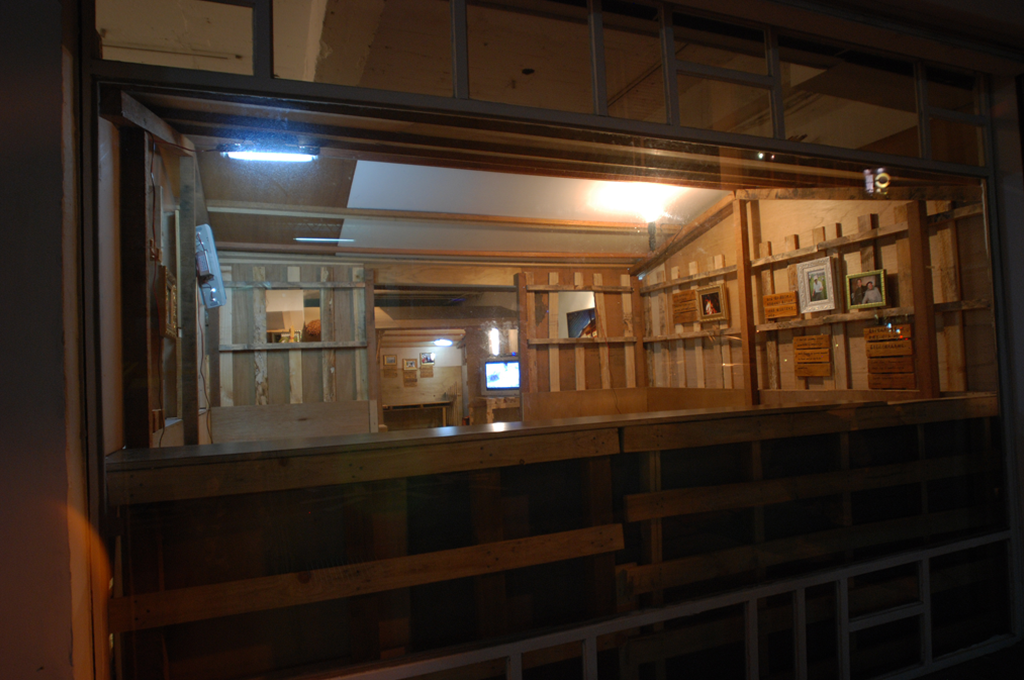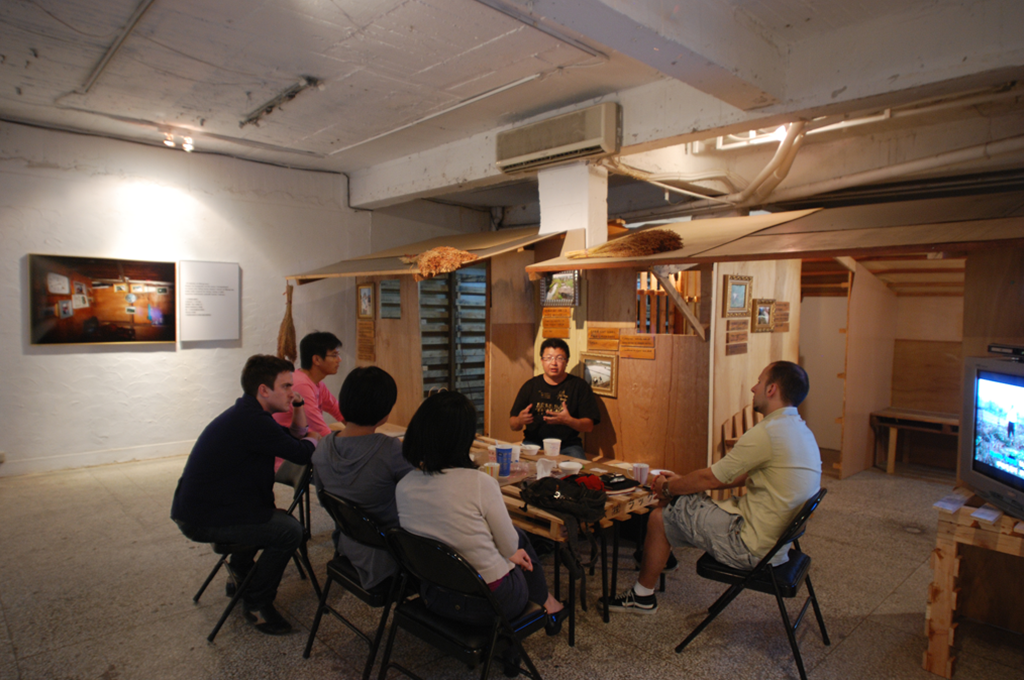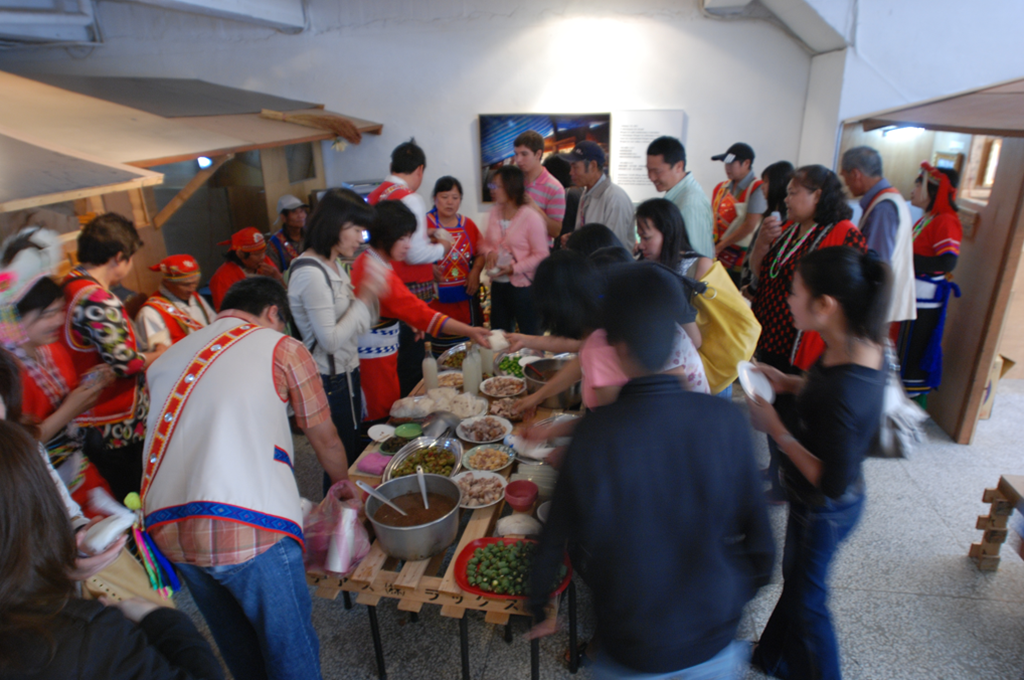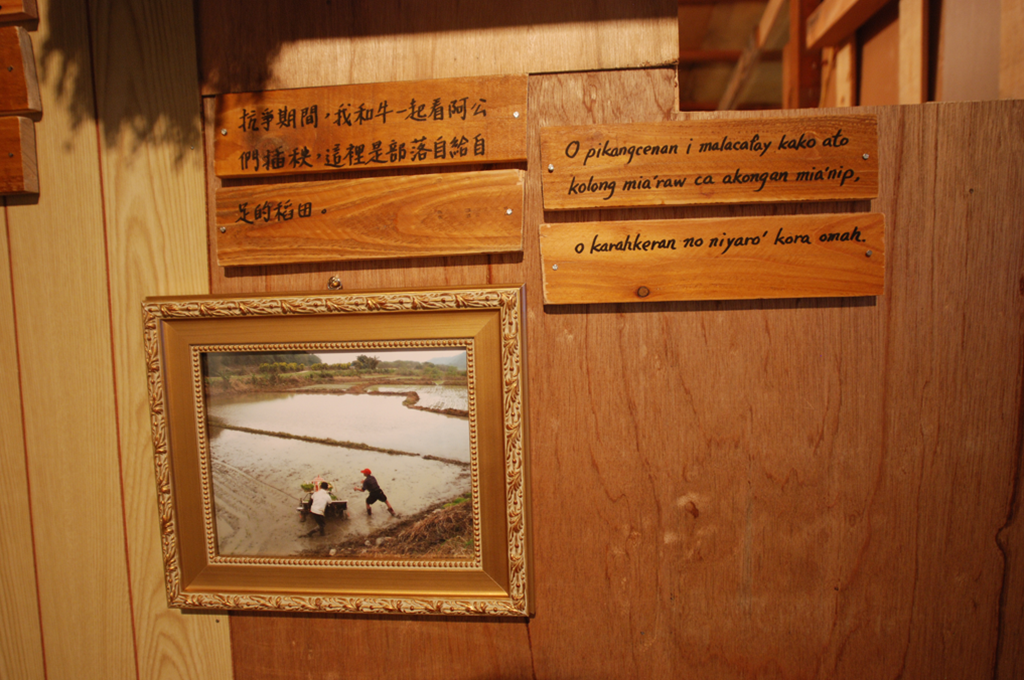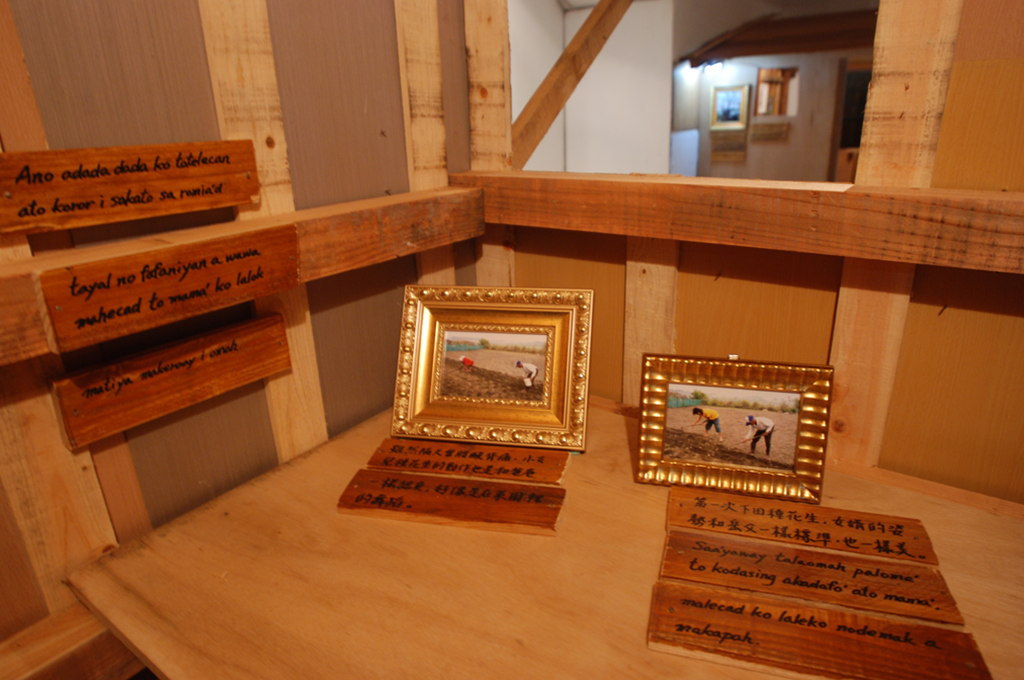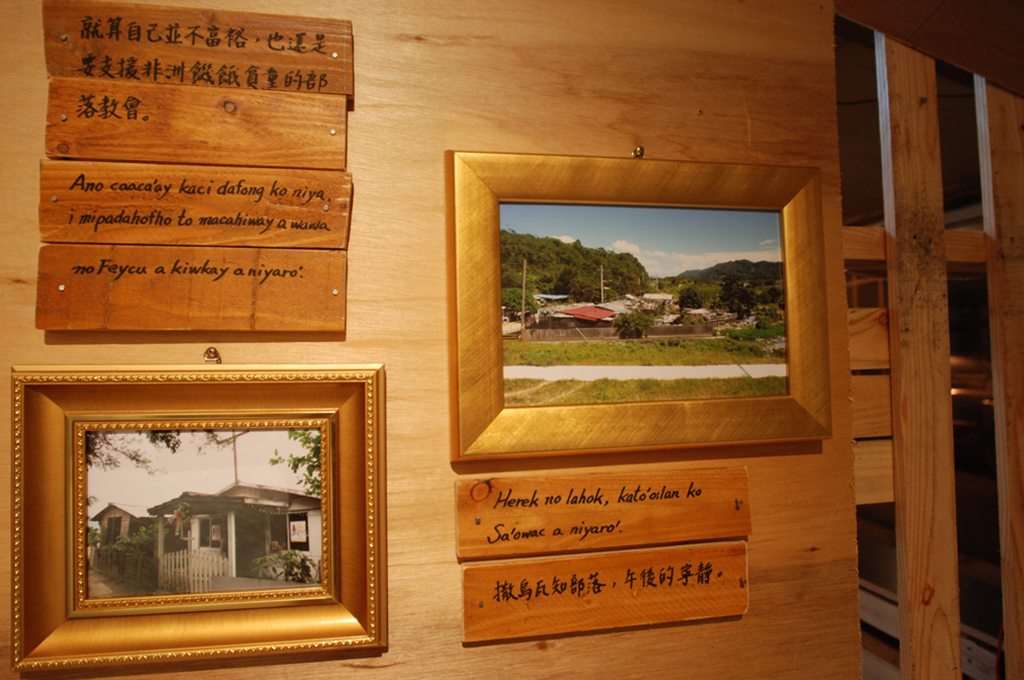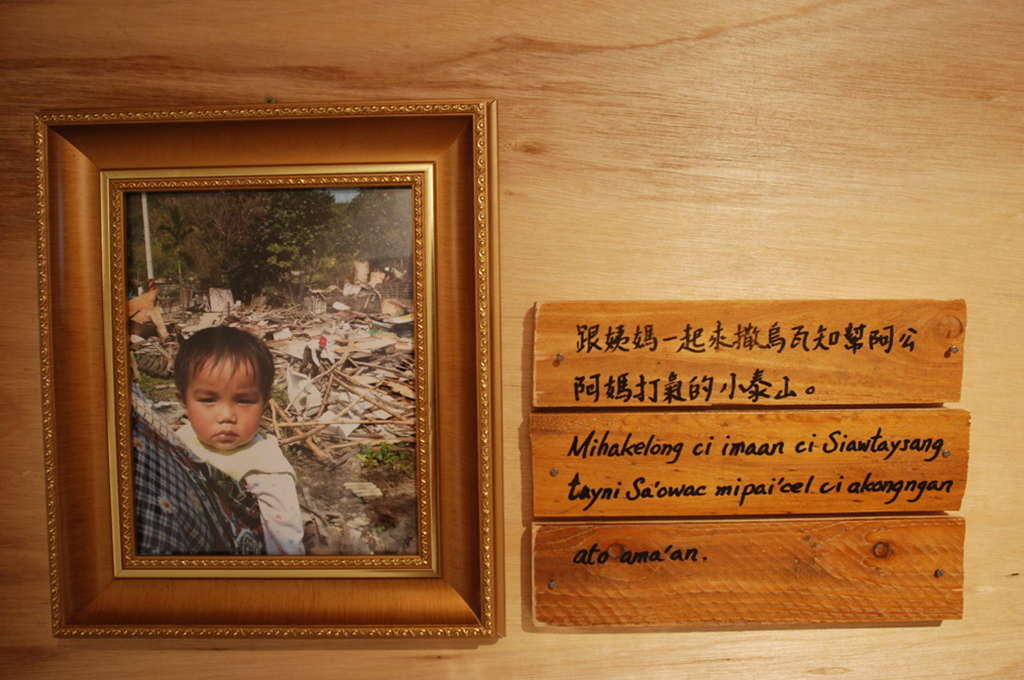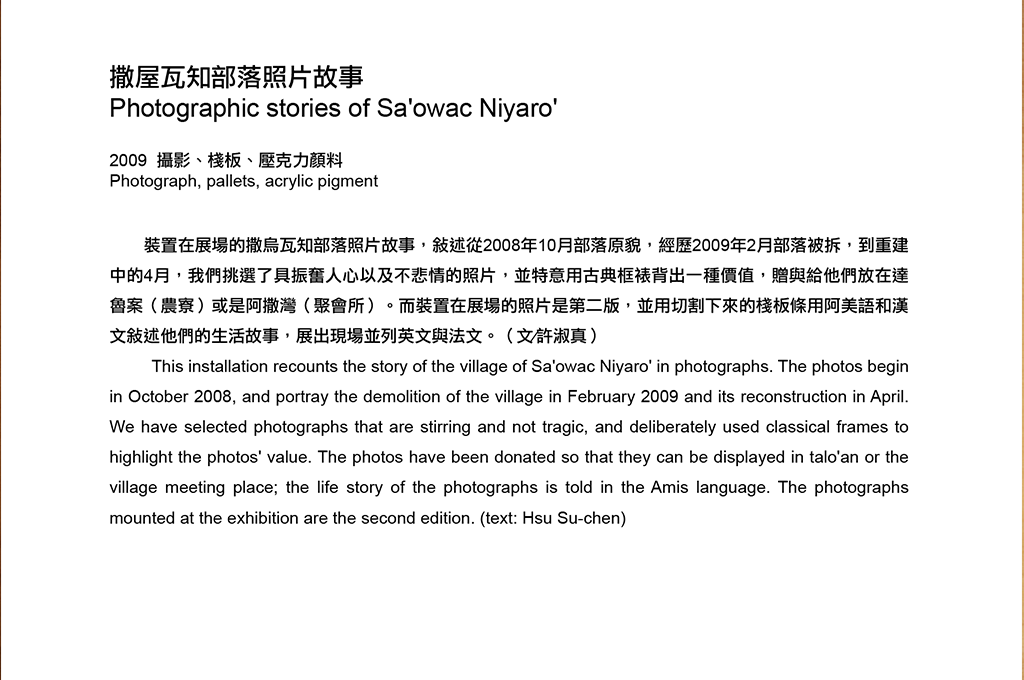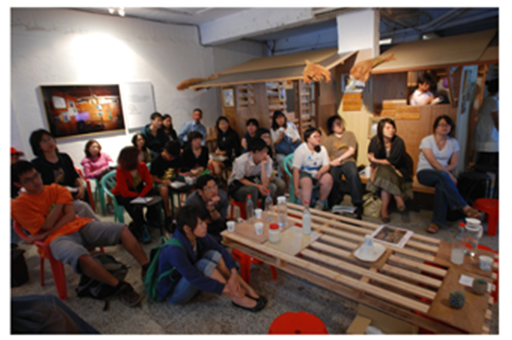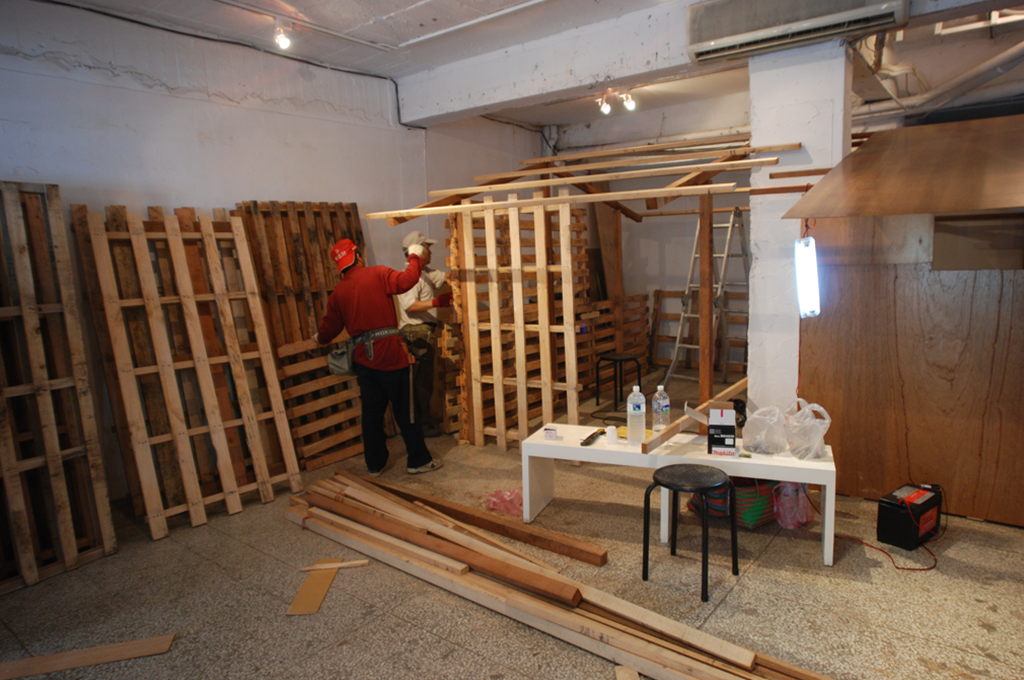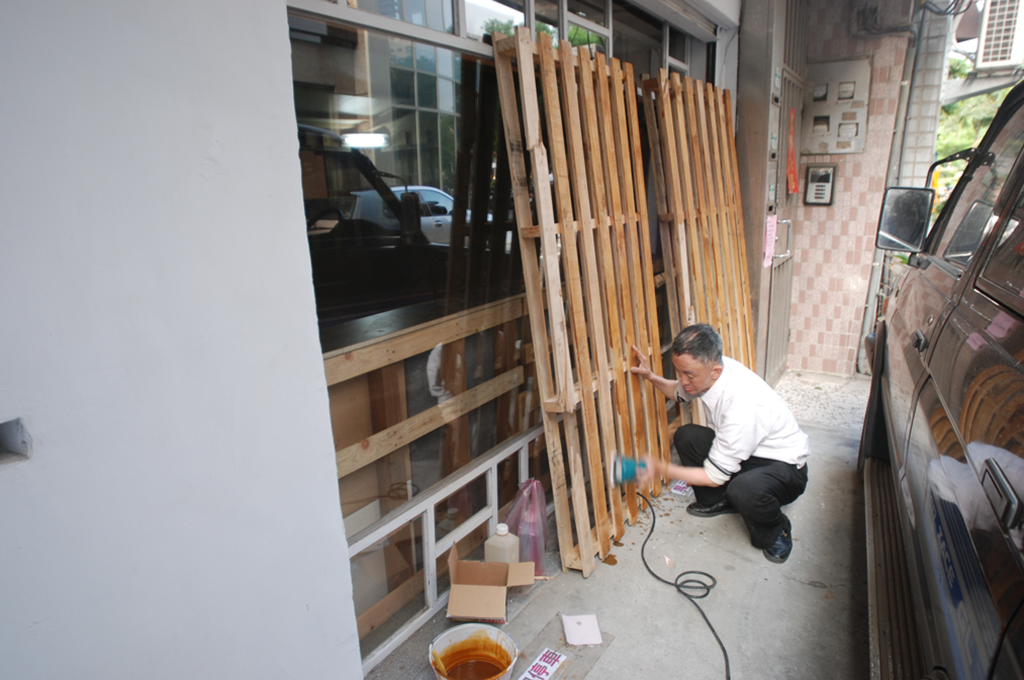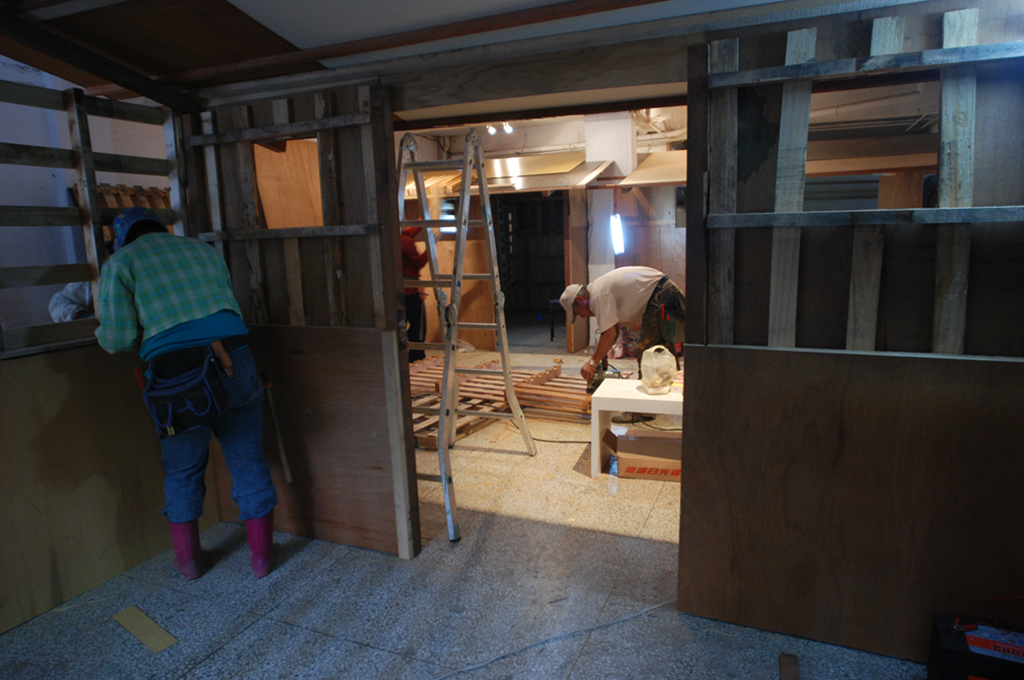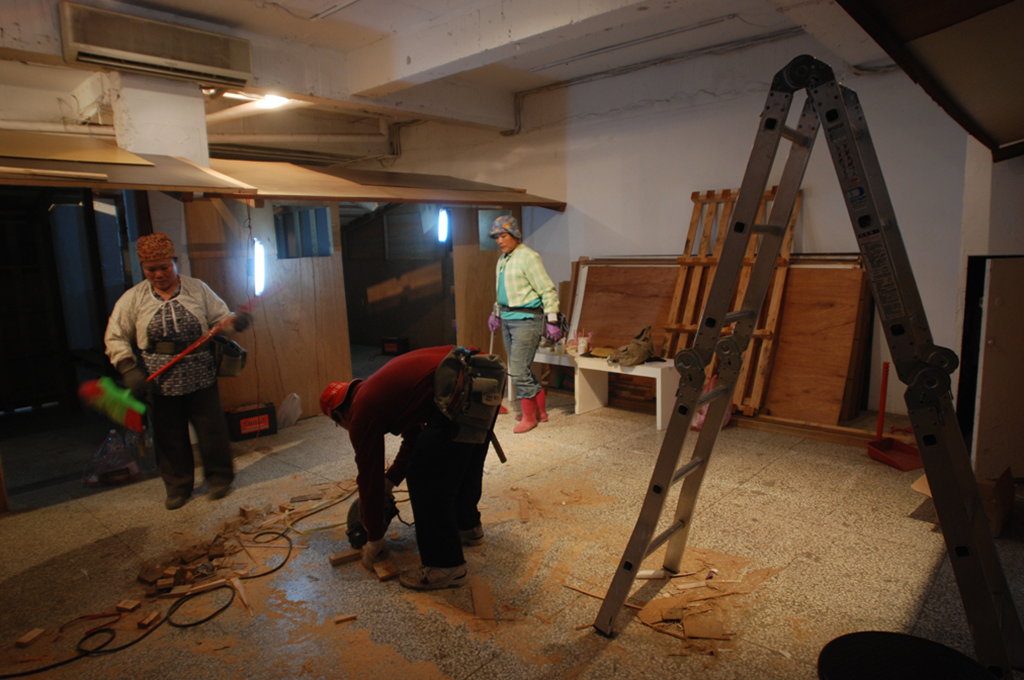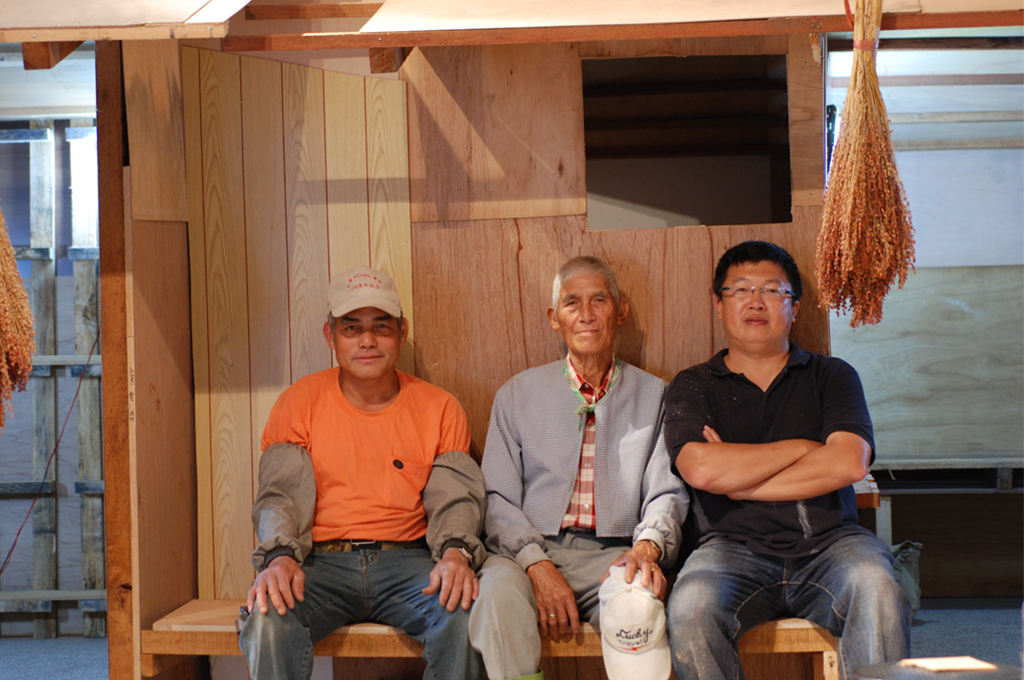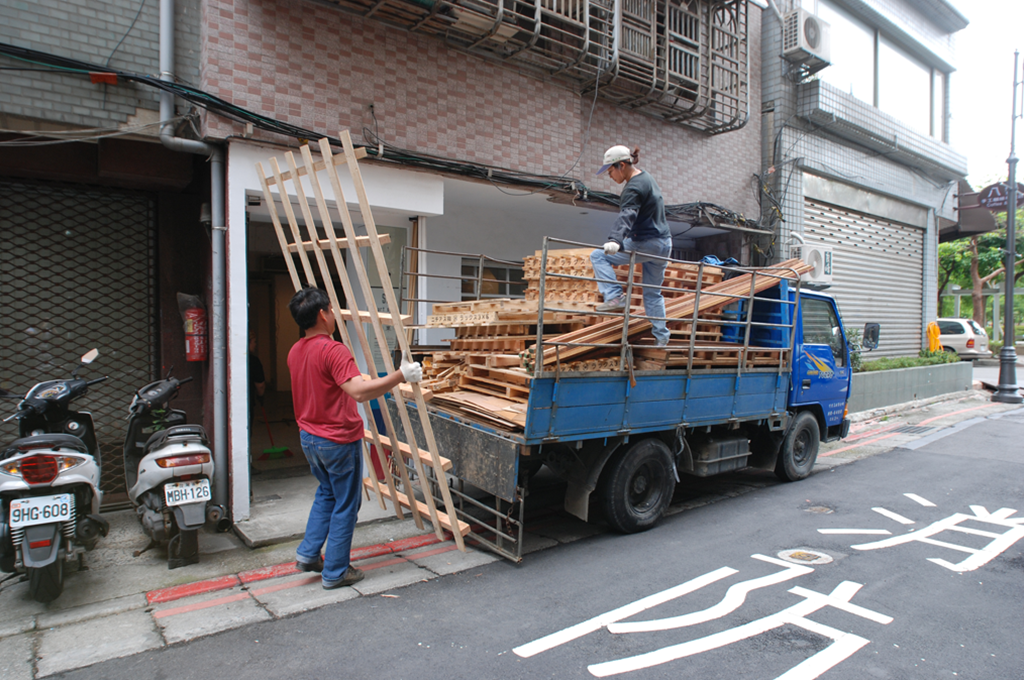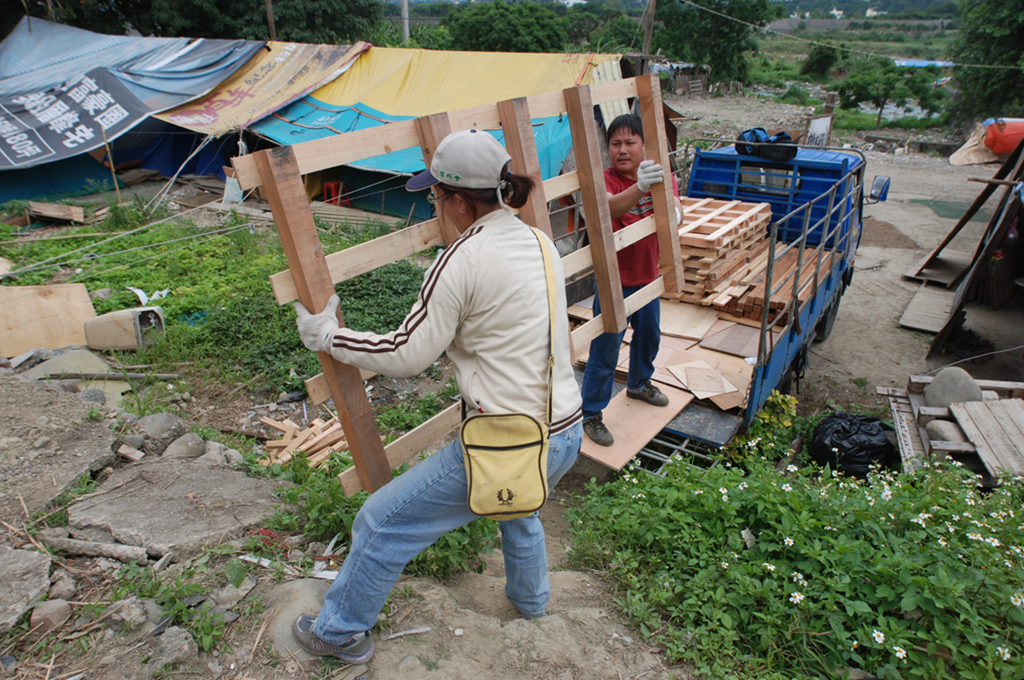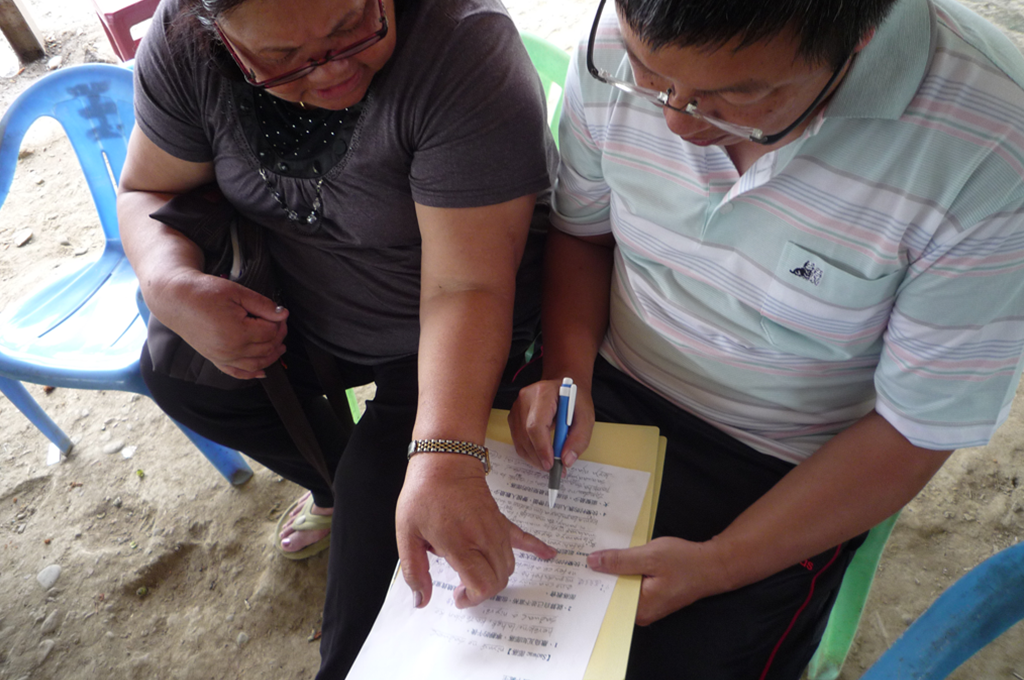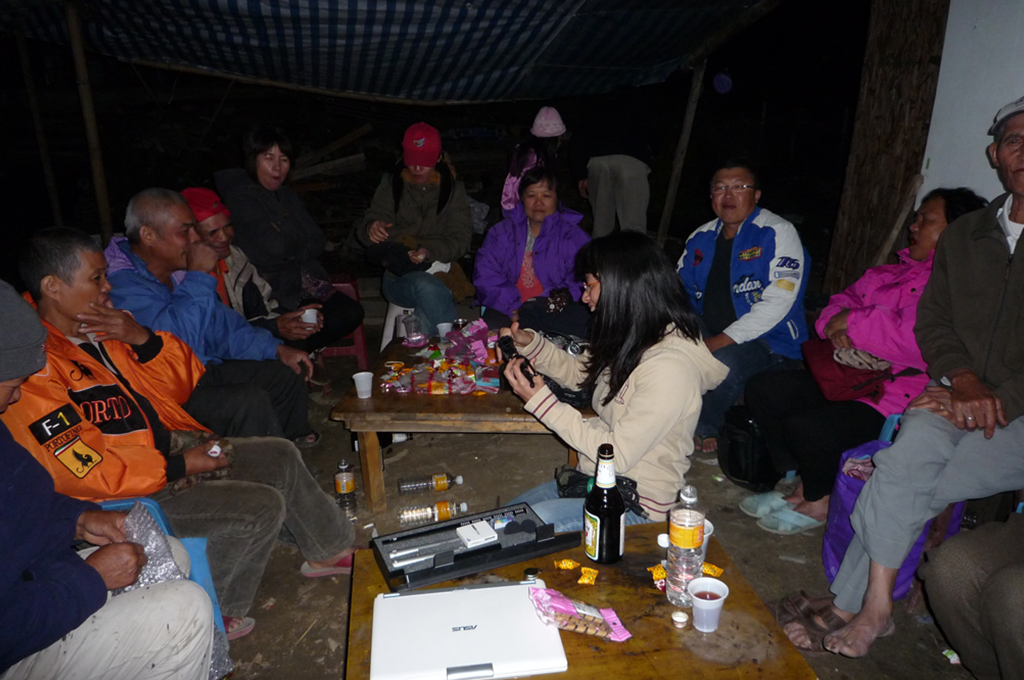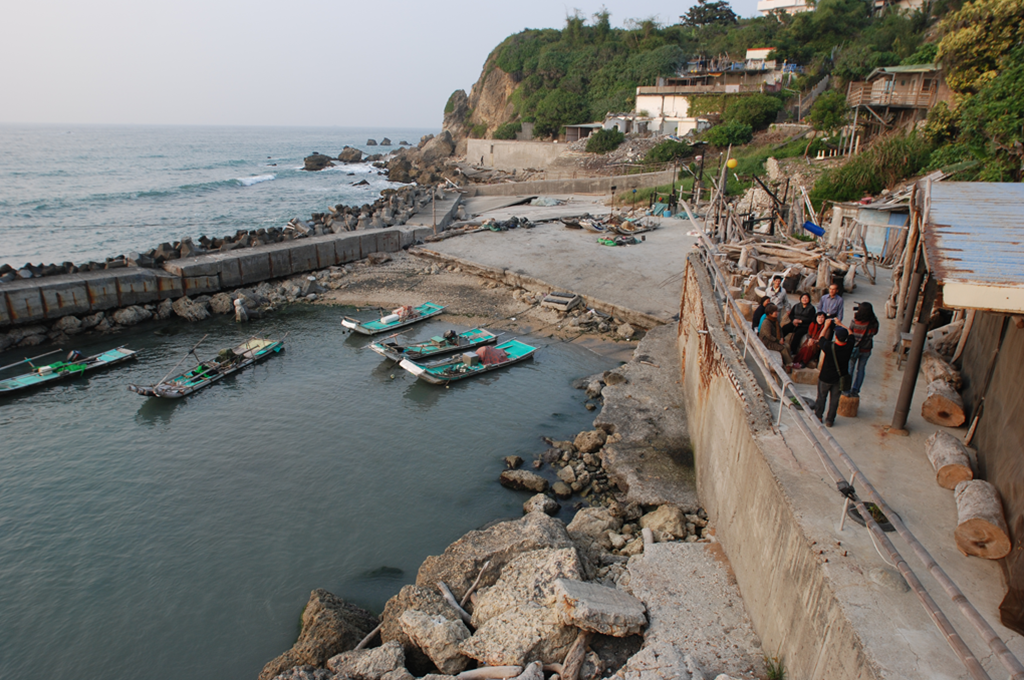植 - 物 新樂園:從菜園中誕生
許淑真+盧建銘個展
Plant-Matter NeoEden: Born in a garden
A Solo Exhibition by Hsu Su-chen + Lu Chien-ming
展覽日期:2009.04.18~05.03
展覽地點:新樂園藝術空間,台北,台灣
講 題:從菜園中誕生的撒烏瓦知部落
主 講 人:
陳 雪(作家)、李俊賢(藝術家、高苑科大建築系副教授)江一豪(三鶯部落自救會顧問)、王秋月(人民火大行動聯盟發起人)
Exhibition Location : Shin Leh Yuean Art Space, Taipei, Taiwan
Topic : Sa’owac niyaro’ Was Born in a Garden
Speakers : Chen Xu, Jiun-shyan Lee, Chiang Yi-hao, Panay
《植物新樂園:從菜園中誕生》創作自述
文/許淑真 2009年4月
「部落誕生」作品是我們親身見證了可能是全世界目前最小最年輕的部落,才18個族人,剛在二月誕生,但也是全數老年族群的部落。部落誕生的動力來自於被全數拆除櫓榪的無家可歸,但撒烏瓦知部落也組織了另一股強大的社會力與行動,原因來自於彼此相同處境的感同身受;也來自於不想繼續選擇沉默,因為那會對於自身加害者的身分更加確立。
作品將不還原近期族人抗爭事件,反而著墨在從模式化運動中長期被忽略了族群性格,返回他們真正的文化與生活樣貌。因為他們被視為弱勢族群的刻板形象,反而長期模糊了他們原有文化面的強勢,更弱化了族人為何堅持原有生活的價值。作為最親近土地的原住民生活哲學,作品中的河濱菜園生活、造屋的行為,彰顯了都市原住民依照地形與環境建造家園的傳統,與利用都市建築廢材搭建住屋的當代都市原住民文化,更是做為保護都市原住民在城市邊緣中,進行合法居住的行動所做的實踐。
來自於撒烏瓦知部落的族人們,會在我們每一次的展覽現場蓋達魯岸,他們使用二手回收的都市建材:棧板、角木和合板,構築他們因藝術事件而被合法化的身體居所,一個虛擬的都市部落。而裝置在三個達魯岸的撒烏瓦知部落照片故事,敘述從去年十月到至今,我們贈與給他們的部落照片(迫遷前與後),並用中文與阿美語敘述他們的生活故事。反應從原鄉到都市生活的阿美語歌謠所做成的部落抗爭卡拉OK,有如他們被拆遷後的部落生活日記;而還在繼續進行的歌謠採集與剪輯,也有如一段慢慢長出來的紀錄片式的教唱影像。
相較於社會地位與經濟的弱勢,撒烏瓦知的阿美文化與永續生活模式的強勢,將成為我們這次展覽最重要的內容。
從菜園中誕生
文/盧建銘 2009年4月
為了假日,想從自己製造出來的車陣廢氣中,逃離出來…,自行車族從地圖上找到了大漢溪沿溪的線條,出發時可以略為吃力的溯河而上,傍晚時可以輕鬆的下降回家。為了自行車穿越溪邊時,能夠有都會公園般的草地風景,我們的社會拆毀了所有的櫓榪(loma',家)和達魯岸(talo'an,農寮)。
為了逃離窮困,為了填滿都市的虛華想像,或是不為了什麼…,阿美族人離開了故鄉的秀姑巒溪和太平洋,在漁船、礦坑、鷹架和工廠生產線上,度過了在都市邊緣的前半生。在三十年半工半農的開墾,最後,終於在大漢溪畔找到了心中的秀姑巒溪。
真的是擺脫不了對達魯岸、菜園和麵包樹最後的依戀;我所認識的長老們,理去了所有的頭髮,在頭上綁上布條,決心保護自己的達魯岸。和祖先一樣,大家選舉了最睿智的人擔任領袖,為自己的部落命了名字 — 撒烏瓦知部落(Sa'owac niyaro'),意思是位於溪邊的部落。
夜晚,氏族長老們圍坐在達魯岸邊的柴火邊,大家輕聲而不安的傳說著昨天的決定。
撒烏瓦知部落從菜園中誕生了。
Creative conception of Plant-Matter NeoEden: Born in a Vegetable Patch
Text: Hsu Su-chen April, 2009
The work "Tribe Was Born" bears witness to what may be the smallest and newest aboriginal tribe in the world. The tribe has a mere 18 residents, and was only established in February, 2009. It is inhabited solely by elderly persons. The inspiration for the tribe was derived from the demolition of Luma, but the creation of Sa'owac tribe also represents a new, powerful, social force and movement. This movement is driven by the mutual sympathy of people in the same circumstances, and also from unwillingness to continue to keep silent, because that would only confirm the victimhood of those who had suffered.
The work does not try to recapture the villagers' recent protest movement. Instead, it portrays the characteristics of the long-neglected villagers in the protest movement, and restores the true appearance of their culture and lifestyle. In fact their stereotyped image as a disadvantaged group obscures their cultural strength, and also blurs their ability to stubbornly hold to their original values. The work's portrayal of riverside vegetable patch and home-building activities underscores the aboriginal philosophy of closeness to the land, and also highlights the urban aborigines' habitual efforts to build a home in harmony with the topography and environment. The aborigines further exemplified contemporary urban aboriginal culture by using waste urban building materials to construct their dwellings. The work additionally depicts the efforts to legitimize the aborigines' wish to live in peace at the urban margin.
The people from Sa'owac tribe build Talo'an (farming huts) everywhere we give an exhibition. They use second-hand recycled urban building materials such as pallets, scrap wood, and plywood to construct these dwelling places that were legitimized due to the art incident, and which constitute a virtual urban village. The photographic story installed in Sa'owac tribe portrays the photographs that we donated to their tribe from October of last year until today (before and after they were forced to move). Their life stories are also related in Chinese and the Amis language, and there is a tribe protest karaoke with Amis folk songs expressing their transition from their homeland to the city. This is like a diary of the tribe's life after the people moved. The ongoing collection and editing of folk songs is also creating a slowly unfolding documentary of singing and images.
Rather than their low social standing and economic disadvantages, this exhibition focuses on the strong Amis culture and sustainable lifestyle of the people of Sa'owac.
Born in a Vegetable Patc Born in a Vegetable Patch
Text: Lu Chien-ming April, 2009
When the weekend comes, they want to get away from the exhaust and traffic they have created, and try to escape… Cyclists can find the route along the Dahan River from the map. The route a bit strenuous in the beginning as it follows the river up, but going home in the evening is all downhill. So that bicycles can pass by the riverbank, and there will be a grassy landscape like a city park, our society has removed all the loma' (houses) and talo'an (farming huts).
In order to escape destitution, to satisfy their vain city dreams, or for no real reason at all, many Amis tribespeople left their homeland on the Pacific coast and along the Ciporan River (Siouguluan River) and led a half-life on fishing boats, in mines, or in the edges on cities, up on scaffolding and in factory production lines. After thirty years of half working and half farming, they finally found the Ciporan River in my heart along the Dahan River.
There is no way that I can escape my attachment to the talo'an, vegetable patches, and breadfruit trees. The elders I know have cut off all their hair, and have tied strips of cloth to their heads in their determination to protect their talo'an huts. Like our ancestors, we elect the wisest persons to be our leaders. We have named the village Sa'owac niyaro', which means "village by the riverside."
When night comes, the clan elders sit around a wood fire by the bank of the Dahan River, and everyone softly, uneasily discusses yesterday's decision.
The village of Sa'owac was born in a vegetable patch.
參展作品:
《河岸阿美的身命與建築技術》
《撒烏瓦知部落照片故事》
《部落抗爭影音卡拉OK》
Works :
“The Lives and Architectural Technology of the Riverside Amis”
“Photographic stories of Sa'owac Niyaro' ”
“Village resistance audiovisual karaoke”
典藏紀錄:
《撒烏瓦知部落照片故事》,高雄市立美術館,台灣
《部落抗爭影音卡拉OK》,高雄市立美術館,台灣
Works in Collections:
“Photographic stories of Sa'owac Niyaro' ”, Kaohsiung Museum of Fine Arts, Taiwan.
“Village resistance audiovisual karaoke”, Kaohsiung Museum of Fine Arts, Taiwan.
影片 Video
建議以Google Chrome 或是 FireFox 瀏覽
